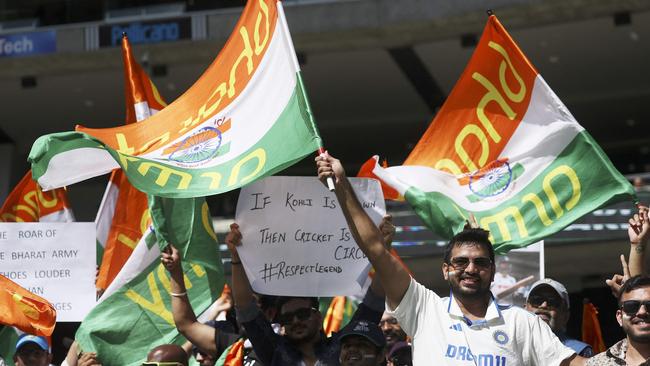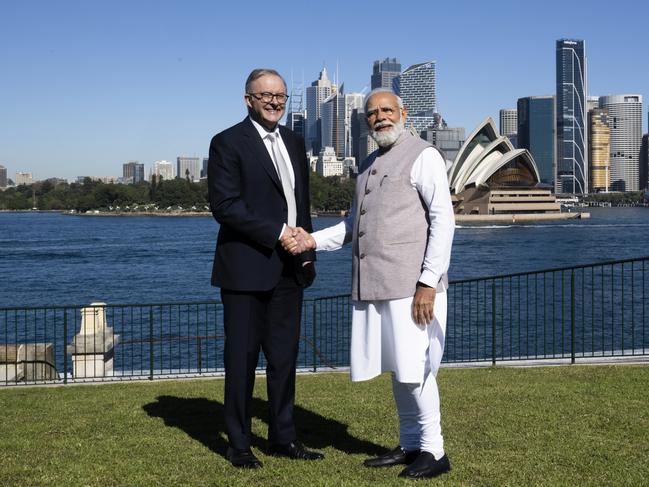Australia, India have many opportunities to work together for mutual benefit

The Test series between Australia and India is proving to be a thriller, with the decider starting in Sydney on Friday. The Melbourne Test saw huge attendances and fervent support for both teams and while the series is being fiercely contested, it is being generally played with respect on the field.
This sporting relationship mirrors the two countries’ growing friendship and heightened levels of trust. Indeed, the Border-Gavaskar Test series has evolved into the “Summer of Opportunity” with Australian and Indian business, government and other key commercial and cultural stakeholders coming together to conceptualise and forge new partnerships and collaborations.
Politically, the past five years have seen relations at an all-time high, since being elevated to a Comprehensive Strategic Partnership in 2020. This continues, with the recent second Australia-India Annual Summit between Prime Ministers Albanese and Modi on the sidelines of the G20 Summit in Rio. Australia is one of only three countries with which India holds annual leader-level summits.
The PMs noted the significant progress made in strengthening bilateral ties across a range of important sectors – including renewable energy, trade and investment, defence and security, education and research, skills, mobility, science and technology. Since May 2022, there have been 24 Australian ministerial visits to India and 19 Indian ministerial visits here, which have helped to drive enhanced understanding, while mutual participation in the revitalised QUAD, since Covid, has provided another vehicle for strategic ties.
But the real game-changer in the bilateral relationship has been the Australia-India Economic Cooperation & Trade Agreement (ECTA), which came into force in December 2022, and has unlocked access to the fast-growing Indian market and providing Australian businesses with opportunities for trade diversification through tariff reductions.
In the first 12 months since ECTA, exports to India (excluding coal) increased 35 per cent in 2023 compared to 2022, with agriculture exports up 60 per cent and industrial exports (excluding coal) up 30 per cent.

Today, with bilateral trade close to $50bn and negotiations ongoing for a final and Comprehensive Economic Cooperation Agreement (CECA), there is great optimism about achieving the target of $100bn laid out by Trade Ministers Don Farrell and Shri Piyush Goyal at the Australia-India Joint Ministerial Commission last September.
Australian businesses looking to enter India should focus on a specific state or region and tailor their products or services for the local market, before expanding to other parts of the country. At the Perth Test, Damodar Mall – CEO of Reliance (Grocery) Retail, India’s largest supermarket chain – advised them to have a “story of origin” to establish a presence and to differentiate their offering. He also outlined the concept of ‘‘culturally licensed premiumisation’’ of product and offering as a way of penetrating the large and modernising, yet culturally sensitive, Indian market.
Australia’s fast-growing Indian diaspora has passed one million people, providing a natural human bridge between our two countries. The leading lights from the diaspora have a critical role in furthering Indian business and cultural literacy among the Australian business community and facilitating bilateral trade and investment.
New initiatives such as the Australia-India Migration and Mobility Partnership Arrangement or Mobility Arrangement for Talented Early-professionals Scheme (MATES) provide further pathways for Indian graduates and early career professionals in targeted fields of study (eg renewable energy, mining, engineering, information and communications technology) to live and work in Australia.
This will further help business partnerships, including new set-ups and collaborations between our respective entrepreneurial ecosystems. Australia should continue to promote itself as a mature and right-size test bed for Indian unicorns and established start-ups, ahead of expanding into other Western markets.
The new India is rapidly expanding with strong demand for Australian resources, services and investment. While opportunities abound for joint ventures across sectors, the renewable energy sector provides Australia and India a unique opportunity to join hands to make a fundamental impact towards achieving net zero. India’s ambitious target of 500GW non-fossil fuel installed capacity by 2030 was probably a key driver for the launch of the new India-Australia Renewable Energy Partnership at the recent Annual Summit.
It provides a road map for collaboration in priority areas including two-way investment in green energy projects (including green hydrogen), clean energy technology and equipment manufacturing, solar PV and supply chains, and energy storage. India’s reliance on critical minerals relevant to these technologies and equipment is another key area of forthcoming Indian investment in Australia.
By 2030, when Jaiswal and Konstas are hopefully in their cricketing prime, India will be the world’s third-largest economy. Australia must engage with and forge strategic trade and investment footprints with the new India for mutual economic benefit.
Jai Patel is a partner and head of India practice at KPMG Australia.


